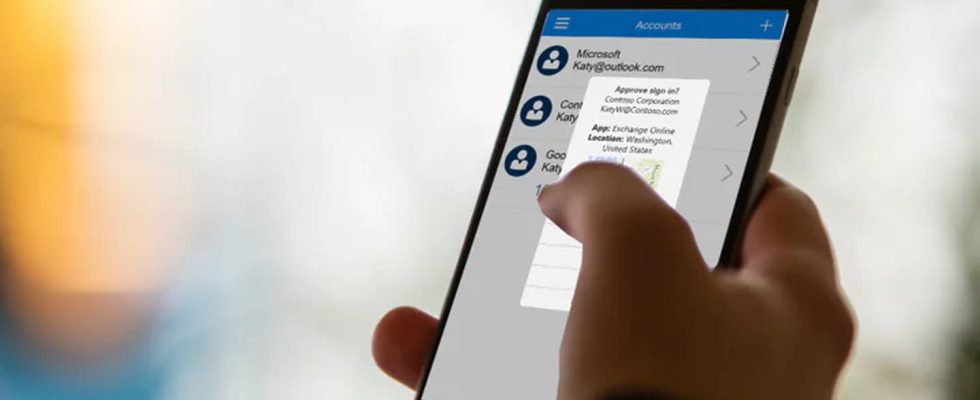The Outlook mobile application will soon integrate a secure identification function. Called Authenticator Lite, this light version of Microsoft Authenticator will avoid having to use two applications for double authentication.
Microsoft relies on Outlook to attract new users and retain them for its services. After making the software version of its famous e-mail client free for Mac users, the Redmond company is incorporating its Microsoft Authenticator security system into the Android and iOS mobile application. As a reminder, Microsoft Authenticator is the company’s double authentication (2FA) solution for web services, which takes the form of an application (see our practical sheet). It thus makes it possible to secure the connection to third-party services (Google, Microsoft, Facebook, Twitter, etc.) by sending a code of several digits or a fingerprint, to be provided in addition to the password. According to Microsoft 365 roadmapthe firm plans to deploy Authenticator Lite, a lightweight version of 2FA, on Outlook. “Authenticator Lite (in Outlook) will allow them to perform multi-factor authentication (MFA) for their work or school account using the Outlook app on their iOS or Android device”, says Microsoft. The feature will launch in preview in March 2023, before arriving on all apps in May.
Authenticator Lite: an integration to facilitate user security
At the moment, Authenticator Lite seems to be reserved only for school and work accounts, but this could change later if success is there. Note, however, a small change from the original service. Indeed, while the dedicated Authenticator application can be used to validate two-factor logins on all online services, including third-party ones, this is not the case with Authenticator Lite, which is limited to logins from Microsoft services.
Nevertheless, this addition should make life easier for users. The integration of Authenticator in Outlook will indeed avoid having to download an additional application to manage double authentication on Microsoft products, a significant space saver for smartphones with limited storage space, and a way to save a little battery. It will also encourage more users to use the service, with many still not using two-factor authentication on their accounts, without asking them to make the “effort” to download a dedicated application – and above all s assure that they will not choose a competing service.
In addition, by ricochet, Microsoft Authenticator will take advantage of the popularity of Outlook to put itself forward – the Outlook application for Android has been downloaded more than 500 million times around the world, according to figures communicated by Google, against 50 million for Microsoft Authenticator, as noted GHacks. The Redmond firm kills two birds with one stone!


